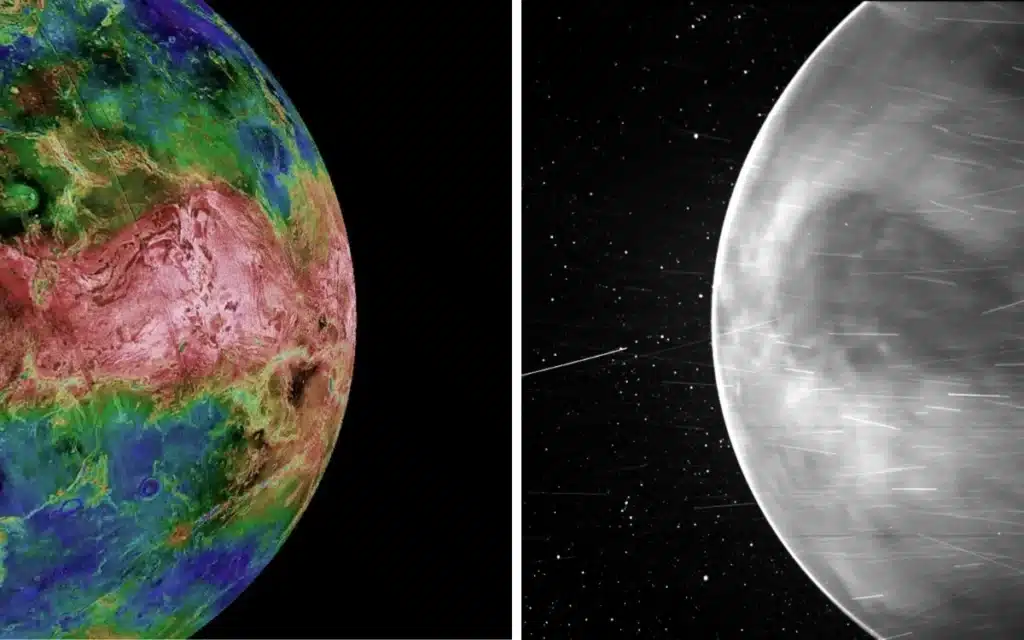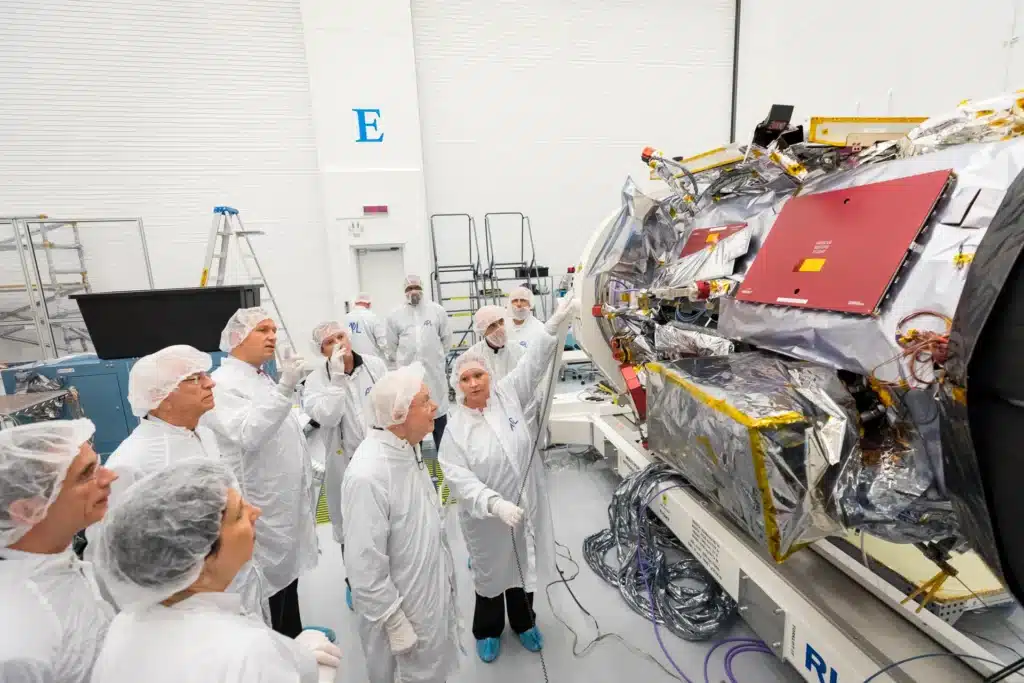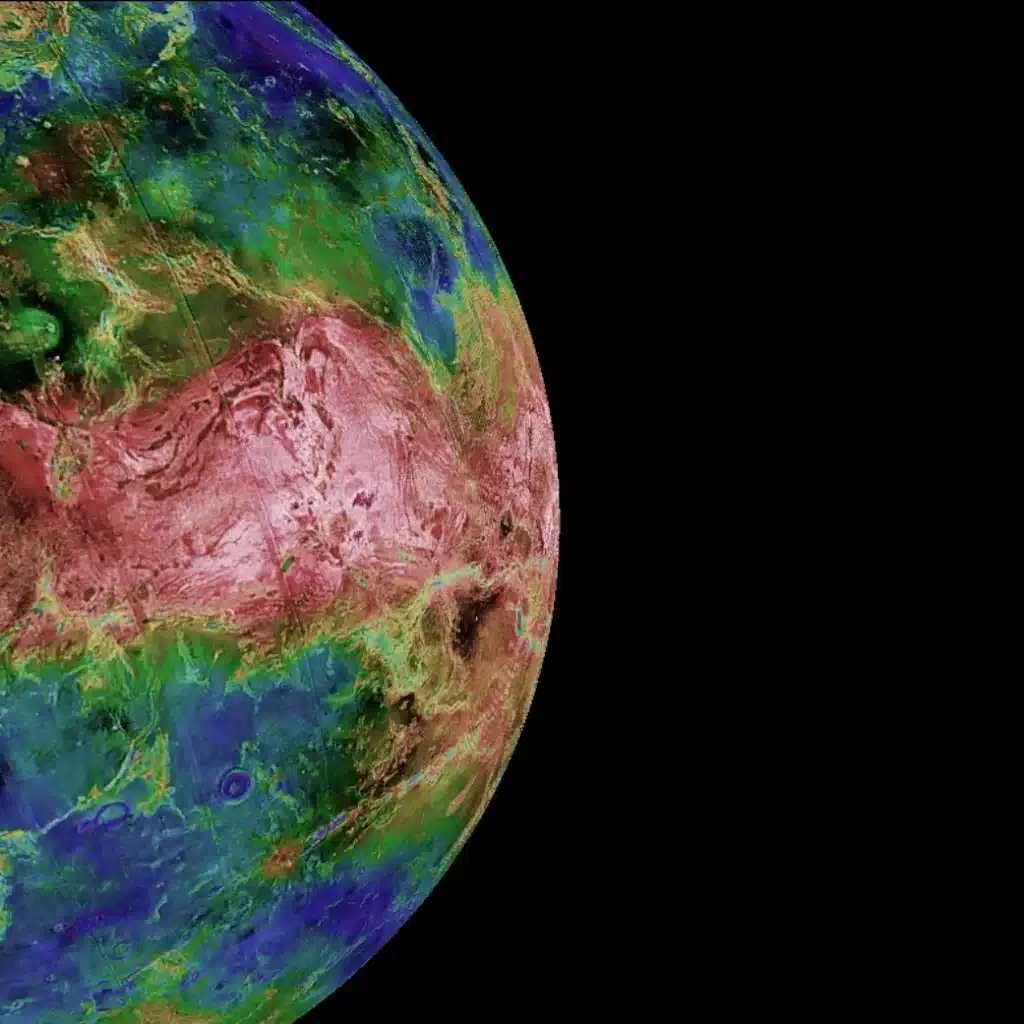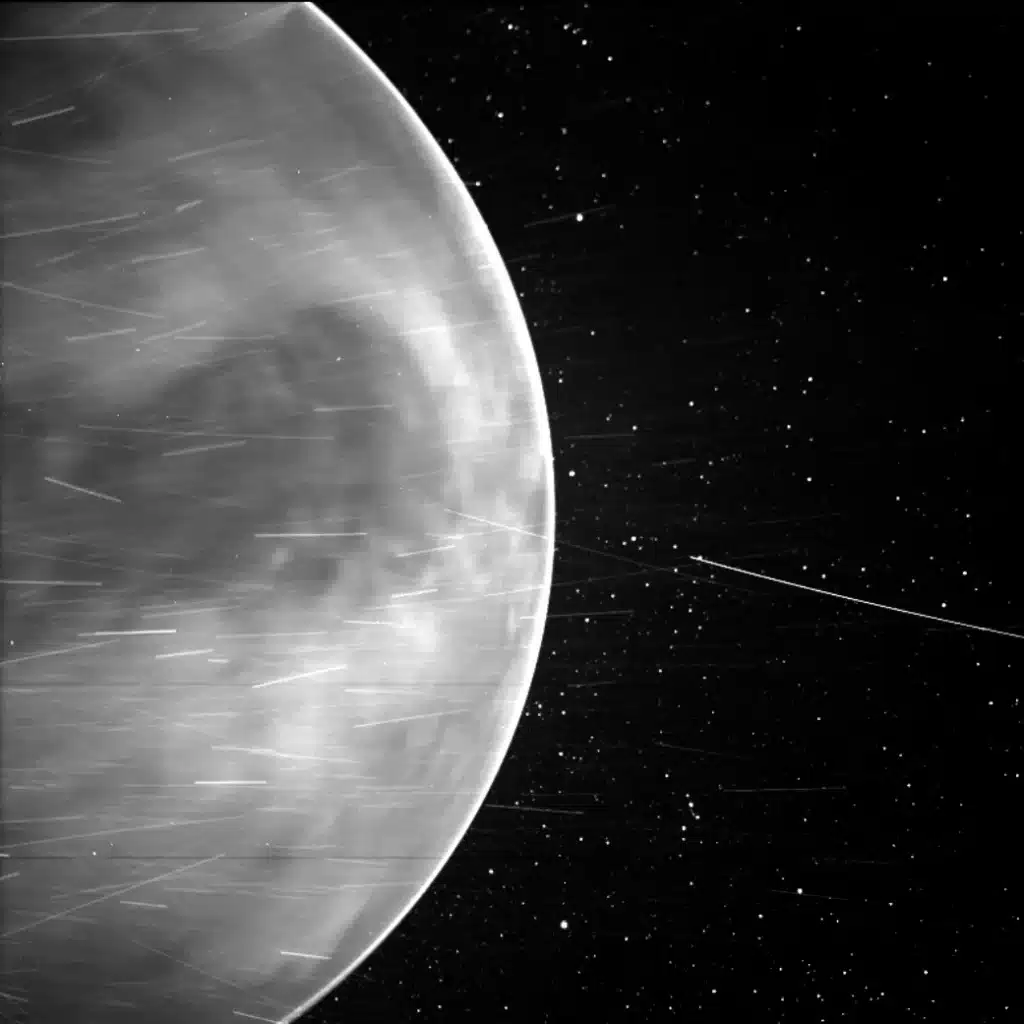NASA captured unprecedented first views of Venus’ surface from space
- Usually covered in cloud and shrouded in mystery, NASA captured the first images of Venus’ surface from space
- The Parker Solar Probe was able to get the first close-up photos taken in visible light
- They’re helping scientists unpack information about the harsh conditions on the planet
Published on Mar 08, 2024 at 8:42 PM (UTC+4)
by Amelia Jean Hershman-Jones
Last updated on Mar 11, 2024 at 4:43 PM (UTC+4)
Edited by
Alessandro Renesis
Usually covered in cloud and shrouded in mystery, NASA has captured the first images of Venus’ surface from space.
NASA’s Parker Solar Probe was able to get the first close-up photos taken in the visible light.

READ MORE! The Tesla that Elon Musk launched into space 6 years ago is moving towards Mars
The first images were taken from orbit in July 2020 and tehn again in 2021.
WISPR was originally designed to capture faint features in the solar wind but unexpectedly captured light and dark surface features on Venus through its thick cloud cover.
The images reveal thermal emission from Venus’ surface, with hotter areas appearing lighter and cooler areas darker.
Scientists have compared WISPR images to radar-generated topographical maps to understand temperature variations with altitude, identifying cooler highland regions and hotter lowland areas.

A full analysis was published in February, 2022, in the journal Geophysical Research Letters and, it turns out, they aren’t just pretty.
In fact they’re adding to scientists’ understanding of the planet that’s previously been likened to Earth’s twin.
Usually smothered in thick clouds, the images were previously impossible to capture.
The space probe used a Wide-Field Imager (WISPR) to image the entire nightside in wavelengths of the visible spectrum – the type of light that the human eye can see.

The beamed back photo data even extended into the near-infrared.
A faint glow can be seen the surface and reveal distinctive features including continental regions, plains, and plateaus.
A luminescent halo of oxygen in the atmosphere can also be seen surrounding the planet.
“We’re thrilled with the science insights Parker Solar Probe has provided thus far,” Nicola Fox, division director for the Heliophysics Division at NASA Headquarters, said.
“Parker continues to outperform our expectations, and we are excited that these novel observations taken during our gravity assist maneuver can help advance Venus research in unexpected ways.”

It’s hoped they’ll help scientists unpack more about Venus’ surface geology, what minerals are there, as well as the planet’s evolution.
It could even reveal why Venus became inhospitable – much like this ‘candyfloss’ planet – and Earth became an oasis.
“Venus is the third brightest thing in the sky, but until recently we have not had much information on what the surface looked like because our view of it is blocked by a thick atmosphere,” Brian Wood, lead author on the new study and physicist at the Naval Research Laboratory in Washington, DC, said.
“Now, we finally are seeing the surface in visible wavelengths for the first time from space.”
Venus isn’t the only planet on the radar, as NASA’s spectacular new images of Uranus will leave you speechless.
But it’s Mars dominating headlines as it was recently revealed Rolls-Royce is developing a nuclear reactor to power rockets and mine Mplanetoon and Mars.
DISCOVER SBX CARS: The global premium car auction platform powered by Supercar Blondie
All Supercar Blondie contributors undergo editorial review and fact-checking to ensure accuracy and authority in automotive journalism. After gaining her BA Hons in French and English at the University of Nottingham, Amelia embarked on a vocational diploma from the National Council for the Training of Journalists (NCTJ). This led to numerous opportunities, from interning at Vogue to being on the small team that launched Women’s Health magazine in the UK, which was named the PPA Consumer magazine of the year for three years running. As Health, Beauty and Fitness editor, Amelia personally received a Johnson & Johnson Award and was shortlisted for both PPA and BSME titles. Since then, Amelia has created content for numerous titles and brands, including the Telegraph, 111 Skin, Waitrose, Red magazine, Stylist, and Elle, as well as being Head of Content at Vitality and Editor in Chief at INLondon magazine. “My superpower is translating technical jargon about the mechanical workings of a supercar into a relatable story you’ll want to share with your friends after you’ve read it.” After joining the SB Media family as a senior journalist in September of 2023, Amelia’s role has evolved to see her heading up the SEO output of the editorial team. From researching the most ‘Google-able’ key terms to producing evergreen content - it’s been a time of hard work, growth, and success for the editorial team and the Supercar Blondie website. “I like to think of myself as a ‘method journalist’. In other words: I live and breathe whatever I am writing about. When writing about fitness, I trained as a personal trainer, and as a beauty editor, I completed an ‘expert’ in scent diploma with the Fragrance Foundation. “During my tenure at Supercar Blondie, however, I did something I never thought possible: I passed my driving test at the age of 36. One day I’d love to train as a mechanic to better understand what happens under the hood, too. “My sweet spot is providing readers with a ‘takeaway’ (read: something new they didn’t know before) after reading every one of my stories. While I don’t claim to be an expert in the automotive world, I know the experts and bodies in the field to rely on to provide our readers with an informative and thought-provoking story every time they visit the site.”




